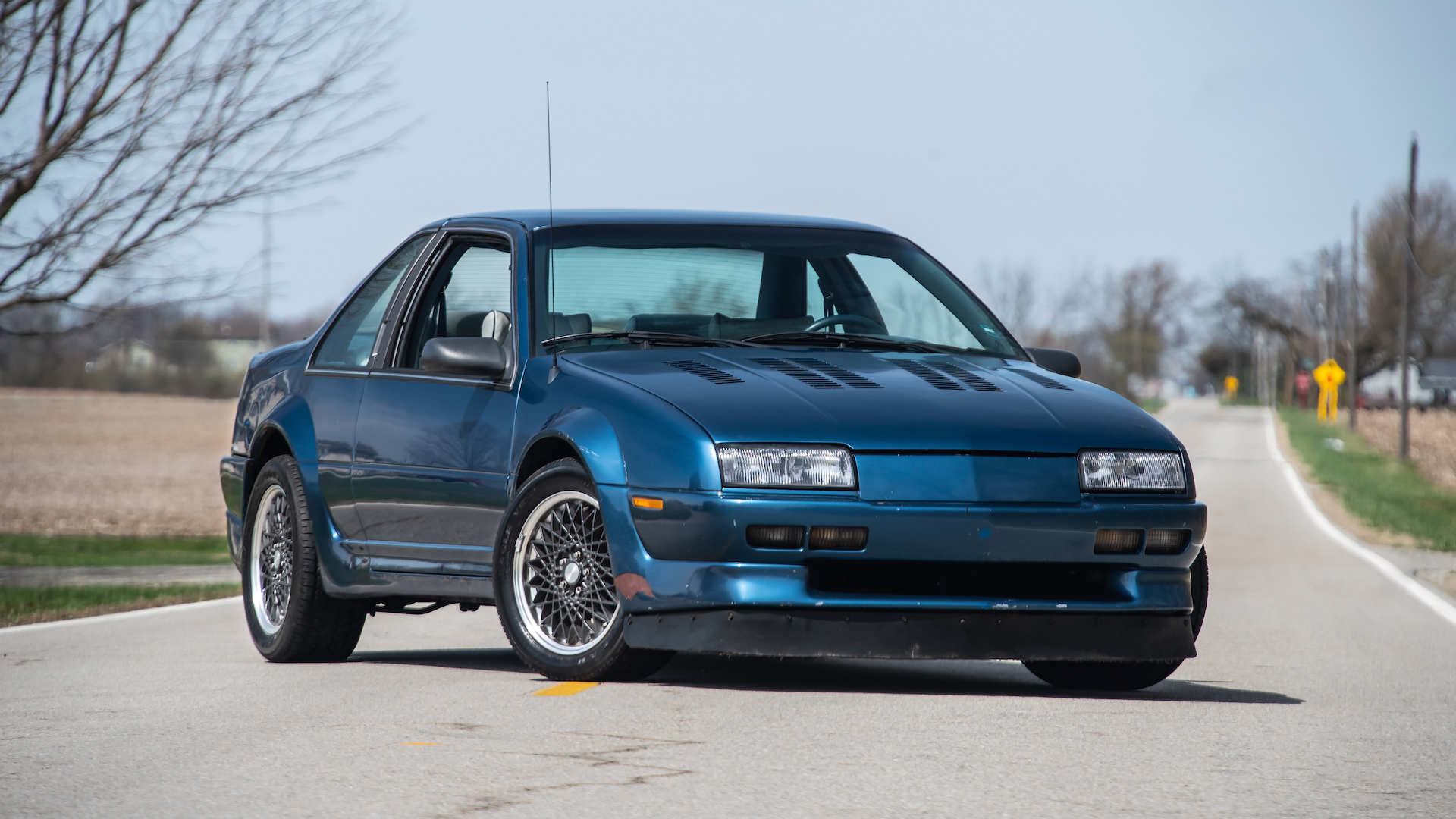

By the 1980s, front-wheel drive’s advantages became impossible for Detroit to ignore. Motor City then took to front-drive with the zeal of a convert, with Ford nearly making the Mustang FWD with a car that was later released as the Probe. Chevrolet might’ve faced similar outcry had it replaced the Camaro with a front-drive coupe of its own, which it is rumored to have considered doing with a Beretta powered by a state-of-the-art V8 from Isuzu of all places.
The Feretta, as GM christened it, was one of multiple prototypes that explored the performance potential of the then-new Beretta coupe. While there’s no official word on where the F in its name came from, it’s widely rumored to have been a nod to the F-body it was allegedly conceived to replace. It’s also possible that the F just stands for “future,” like it says on the steering wheel, but its performance is close enough to the Camaro’s that it might’ve been an acceptable stand-in to some.

So reports the Feretta’s owner Tyler Pitman, a former Beretta owner who tells us this hand-built concept car drives nothing like any other Beretta. He says it accelerates like an LT1 Camaro with plentiful low-end torque, making a noise that he’s had bystanders tell him sounds like a “Winston Cup [stock] car.” How much power it really makes, though, remains a mystery, as does much else about the Feretta’s one-of-a-kind, all-aluminum Isuzu V8.
We’re talking a twin-cam, 32-valve unit, displacing about 3.5 liters—its exact displacement isn’t known. It’s remarkably complex for an engine in an ’80s American car, with coil-on-plug ignition and separate ignition modules for each cylinder bank, whose heads are connected by a belt driving the camshafts from the back of the engine. Being a GM vehicle, though, the Feretta isn’t all bespoke; its starter comes from a GM V6, and its alternator, the Isuzu Rodeo. Its attached five-speed manual transaxle also hails from Isuzu, and might be a box similar to the one supplied for the four-cylinder Pontiac Fiero.

Chassis alterations are fewer in number, consisting of reinforced control arms, a battery relocation to the trunk, and two-piece BBS wheels mounted on one-inch spacers on the rear axle. Tags on its springs suggest they or the shocks may have been retuned, though they’re now illegible, leaving their exact nature as mysterious as the purpose of the disconnected wiring harness under the dashboard. Both might’ve been recorded in the development binder with which the car was originally sold, but that went missing over the years, likely during one of its multiple strange changes of ownership.
The Feretta was hidden away in GM’s Heritage Center until GM’s bankruptcy, after which it was auctioned in 2009 by Barrett-Jackson. Its new owner registered it in Florida as a kit car, then passed away, with their estate selling it to someone who wound up losing it at in a poker game. Owner number four didn’t cherish their winnings, apparently driving it with some regularity and parking it outside. There, its one-off body, much of it fiberglass, with a unique vented hood, huge fender flares, and possible GTZ prototype bumpers, began to degrade. That’s where Pitman stepped in.

Pitman’s goal is to preserve and document this artifact of GM’s past, from its one-off body and interior to that impeccable Isuzu V8. That hasn’t been easy, as while a hole in its muffler was easily patched and a failed igniter could be substituted for one from an Infiniti Q45, any serious maintenance isn’t doable. There’s nothing in the way of service literature, never mind parts, so there’s no way to fix the Feretta if anything goes wrong, either at random or when Pitman takes it to a dyno to determine its power output. As such, Pitman is on the hunt for GM and Isuzu engineers who have some knowledge of the Feretta, and could help him maintain, restore, and fully explore the most unusual GM L-body in existence.
It may have never meant to reach the public hands, but now that the Feretta has flown the coop, we may as well record its call.





Know anything that might help preserve the Chevy Feretta? Email me at james@thedrive.com and I’ll put you in touch with the owner.